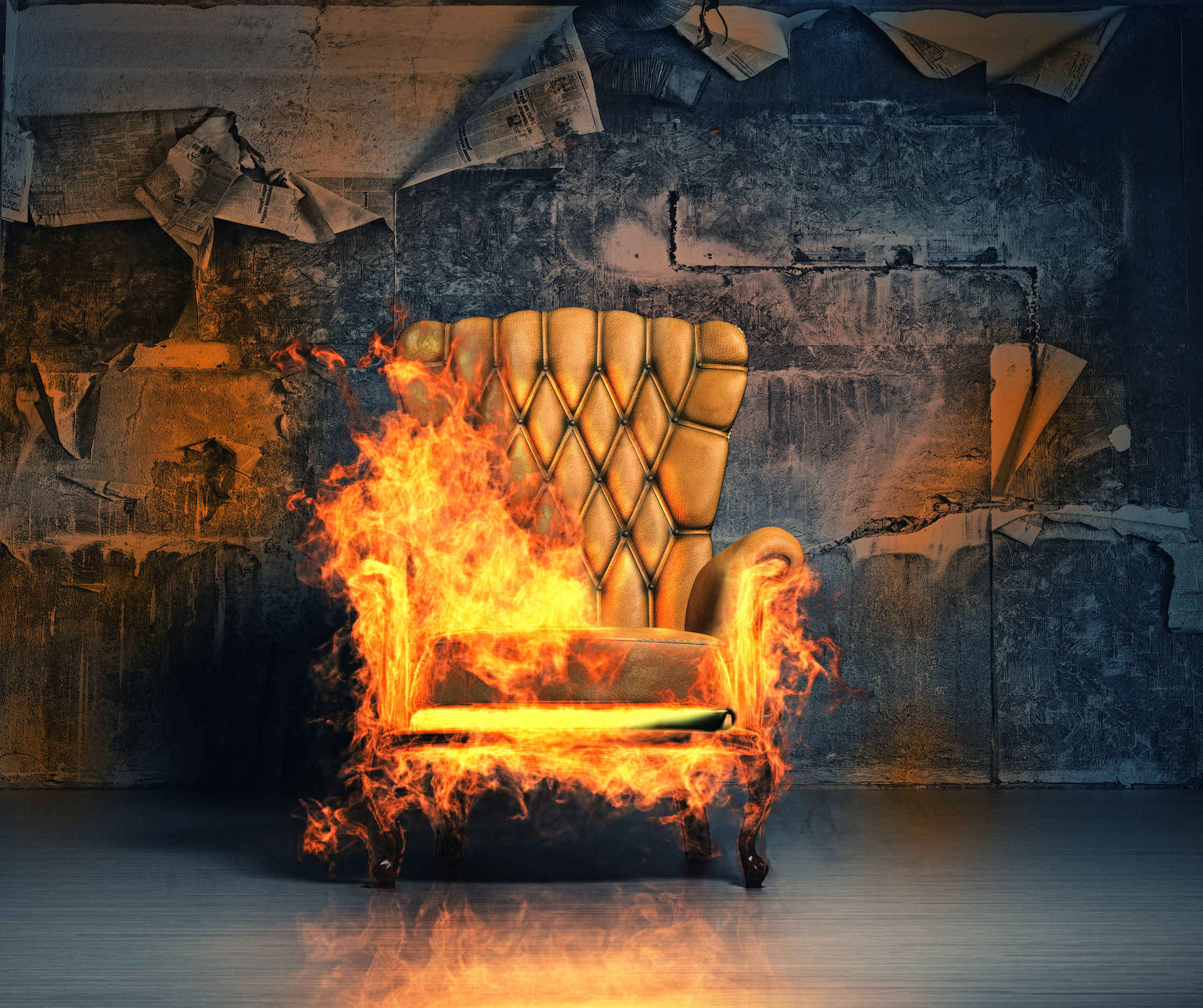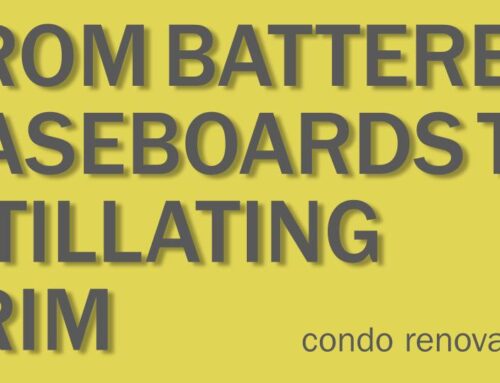Since February 2016, three serious multi-residential fires have occurred in the Toronto area. Although the specifics regarding the blazes differed, all three fires shared one similarity: the fuel source was furniture.
After identifying this pattern, it was only a matter of time until Toronto Fire Services implemented new guidelines to prevent further tragedy from happening.
That time is now.
New Fire Guideline Establishes Criteria for Hallway and Lobby Furnishings
Toronto Fire Services’ guideline, issued last year, places restrictions on the type of furnishings allowed within evacuation routes of multi-residential buildings, including condos.
Several Compliance Options to Choose From
Shop for TB-133 Rated Furniture for Condo Lobbies here.
If a Toronto Fire Inspector notes a violation to the local guideline, seven different compliance options are available to bring your building into compliance. Compliance options include equipping the area with a smoke alarm or smoke detector, installing overhead sprinklers and removing furniture that does not meet the guideline.
Another one of the compliance options is to prove that the type of furniture located in your condo’s lobby and corridor spaces passes the Flammability Test Procedure for Seating Furniture for Use in Public Occupancies as described in the State of California Department of Consumer Affairs, Bureau of Home Furnishings and Thermal Insulation Technical Bulletin 133-91 (TB 133) or the Standard Test Method for Fire Testing of Upholstered Furniture (ASTM E1537-16).
Doing so could be as simple as checking that the furniture features a label attesting that it meets TB-133. The interior designer should supply a specifications sheet indicating the qualities of the furniture components including flammability. You can contact your interior designer to attain this documentation if you are unable to find it in your files. Look for documentation of the upholstery fabric as well as the structural components of the furniture such as foam or stuffing.
Toronto Fire Services have also stated that if the common areas are sprinklered in accordance with NFPA 13, then the upholstered furniture is not required to meet either CAL TB 133 OR ASTM 31537.
Folio Interior Design Partnered with Trellis to offer a line of TB-133 Burn-tested furniture for worry free selections. Visit the website here.
Means of Egress
When discussing fire regulations in condos, means of egress is really important. A means of egress is simply a continuous and unobstructed way of exit travel from any point in a building or structure to a public way. How your condo lobby is laid out makes all the difference. For example, you will not need to replace your furniture if all residents have direct means to an exit from their units and from common amenities, and can by-pass the lobby. It only becomes a safety issue when residents have to walk past burning and smoldering furniture in order to make a safe exit. If there is furniture in anyone’s path to get safely outside, the furniture must meet the specifications, or have sprinklers directly over it.
But sometimes it’s not that straightforward, and an inspector will be the one to make that call. Fire Protection Engineer Bill Nguyen from Toronto Fire Services illustrated this using a helpful scenario. He gave the example of a building with a rectangular footprint, with ground floor condo lobby containing upholstered furniture. The building has two exit stair shafts, one at either end. One has a door leading to the outdoors and one has a door that leads to the lobby, where a person must exit through the main doors. In this situation, the lobby furniture would need to comply with CAL TB 133 or ASTM E1537, or the lobby be sprinklered, since one of the exit stair shafts empties into the condo lobby. It would be unreasonable to expect that occupants in that exit stair shaft to retreat back up and cross over to use the other exit stair shaft at the opposite end of the building.
Another example would be a condo party room. Here, the party room is fire-separated from the remainder of the common elements by a fire separation (walls). Therefore, a fire would be contained to that room, should it erupt and furniture would not have to meet fire-standards. If people need to exit the building from the party room through the lobby, of course, the lobby’s furniture needs to be fire-rated.
Ensuring Your Condo’s Common Spaces Meet Compliance Regulations
Choosing how your condo building’s hallway and lobby will meet compliance regulations is up to a condo building’s Property Managers and Board Members.
The main point to remember is that this is a time sensitive matter – when your building is issued with a violation, the Toronto Fire Services will issue a deadline for the matter to be rectified. If not, convictions carry a maximum fine of $100,000 for corporations and $50,000 for individuals, who also face a maximum term of imprisonment of one year.
Even though convictions are possible, Toronto Fire Service is more interested in keeping your condo building safe. The fire service welcomes inquiries from Condo Management Boards and Condo Property Management teams regarding how to ensure your building is compliant. It will be only a matter of time before all jurisdictions begin enforcing the same way as Toronto Fire Services.
To Replace or not to Replace? What to Look For
Should you choose fire-rated furniture even when it is not absolutely required? Consider the reasons for the recent toughening of fire guidelines in the first place: When polyurethane stuffing (the most common filler in soft furnishings) burns, it burns fast, and most concerning, releases hydrogen cyanide. Most fatalities involving fires today result from toxic gas rather than the fire itself. Plus, if the fabric which covers the foam is also not fire rated, it can be a simple matter of a vandal holding a lighter to a cushion, as was the case with one of the tragic apartment building fires we saw in 2018.
Whether you are considering voluntary or mandatory replacement, what should you be looking for? When we talk about fire rating furniture, we are really talking about three elements, not including the frame (which can be solid hardwood or steel ideally). There is the foam, the fabric, and a barrier between the two. The barrier is what makes the furniture meet the TB-133 and ASTM 31537 standards for burn rate and smoke release. On their own, there isn’t fabric OR foam that meet these strict standards, at least readily available. But with an added layer of a heat resistant material (such as Kevlar), together they will meet the specifications required – and your supplier or designer will provide you with a material data sheet indicating as such.
Did your inspector give you a pass? If you are concerned about fire (as we all should be) but aren’t required to meet the aforementioned standards, you can still look for fabric and filling that meets California TB-117, which is readily available through reputable furniture makers. The cost for the same piece of furniture that meets TB-133 will cost approximately 15-20% more on average. An arm chair with TB-117 fabric and foam costing $2800 can cost $3200 with the fire-proof barrier layer added.
Fire-Safe Summary
- If you have been ordered comply with guidelines, and decide to replace your furniture, you must find pieces which meet the specifications for fabric, foam and a barrier layer.
- What you see as soft furniture or accessories, a fire inspector sees as fuel.
- As long as every single person can leave your building without ever passing a piece of burning furniture, you will likely not need to replace any lobby items. But ask your inspector to be sure.
- If it is time to replace your furniture and you voluntarily opt for fire rated pieces, look for solid frames, commercial grade fabrics (80,000 rub and higher) with TB-117 fire ratings. They will last longer anyway.
- Make sure all décor such as cushions, Christmas trees and other soft accessories are kept out of escape routes, and check labels for flammability.
At Folio Interior Design Group, we pride ourselves on staying abreast of the latest regulations regarding Toronto’s condo industry. Let us show you some lobby and corridor furnishings that are in compliance with Toronto’s fire regulations! Contact us today for more information.
By Sarah McKenzie, Samantha Angel and Lisa Marie Brennan





